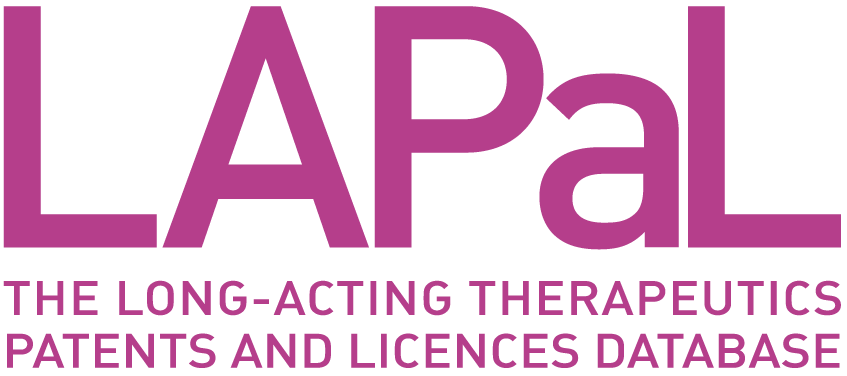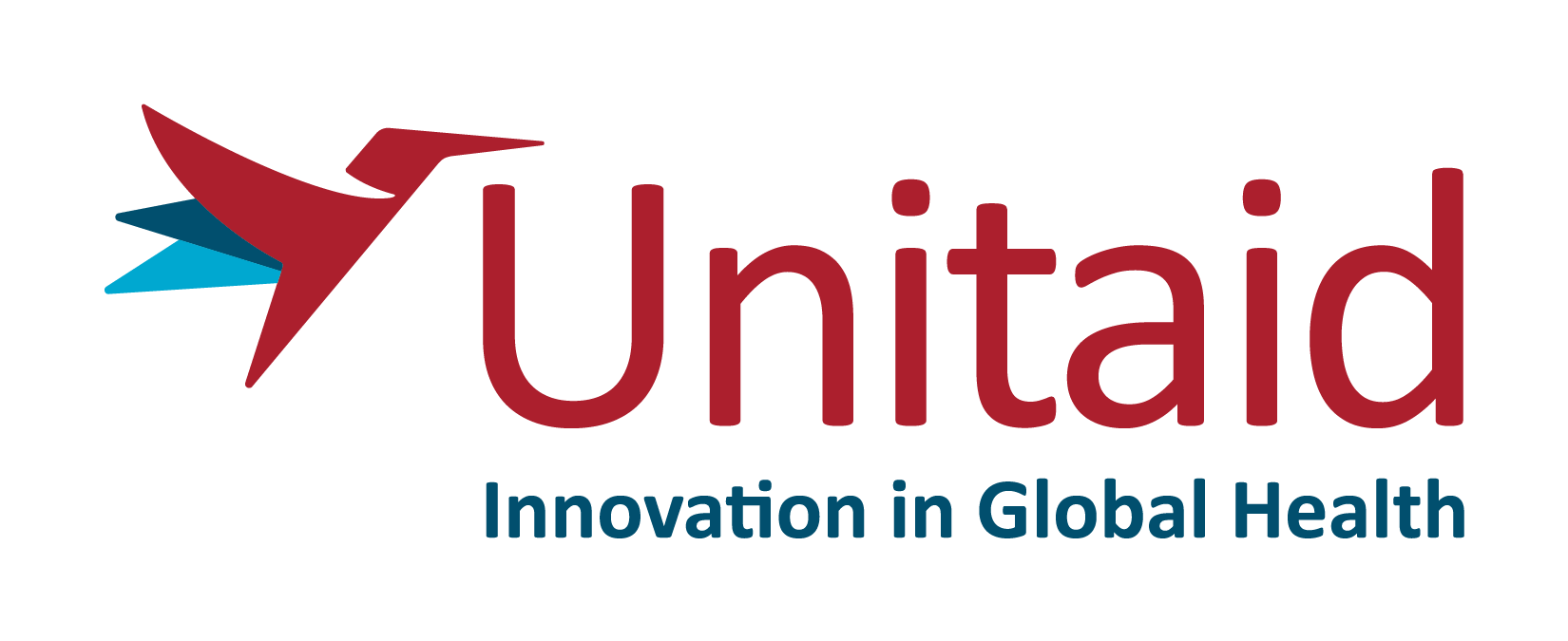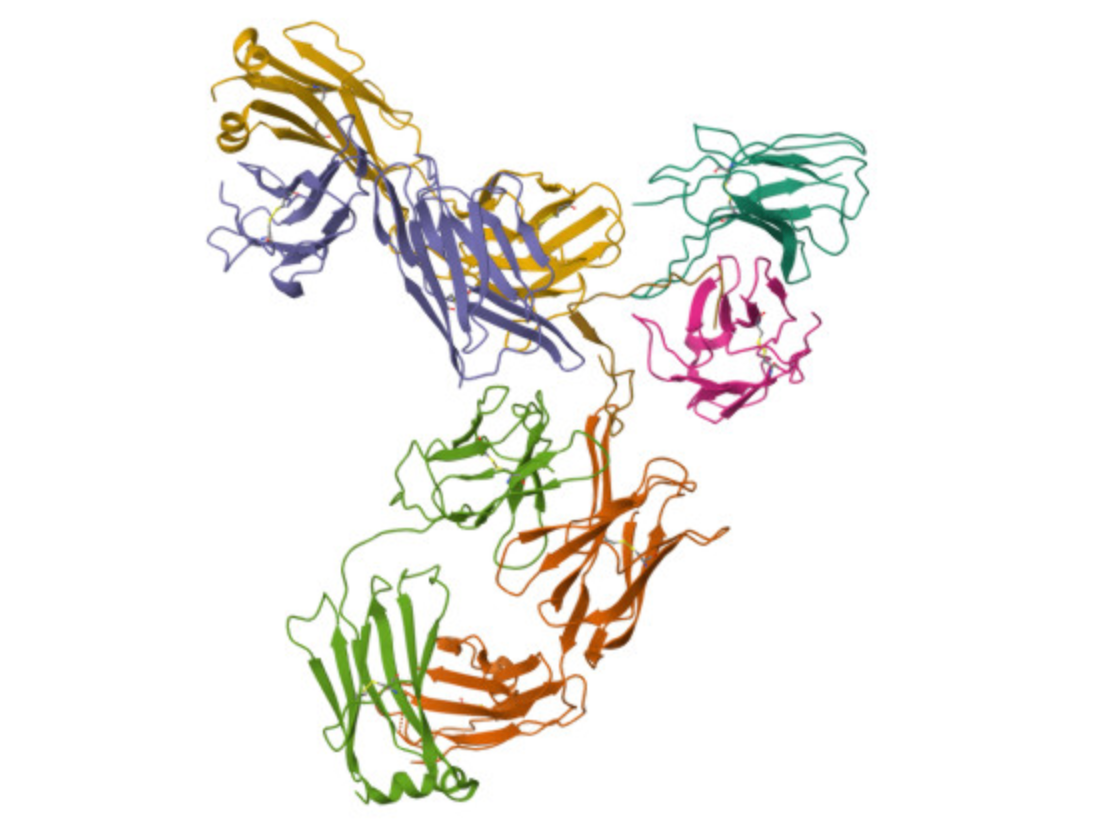
|
Developed by 

|
Supported by 

|

L9LS
Developer(s)

|
Leidos Biomedical Research https://www.leidos.com/United States Leidos Biomedical Research, Inc. is a research company that operates the Frederick National Laboratory for Cancer Research on behalf of the National Cancer Institute. Based in Frederick, Maryland, the laboratory develops technological solutions for HIV/AIDs, emerging infectious diseases and oncology, in addition to providing scientific support to several national institutes including the NIAID. |
Drug structure

Crystal Structure of L9 with PfCSP (dominant class)
https://doi.org/10.2210/pdb8EK1/pdb
Drug information
Associated long-acting platforms
Monoclonal Antibody
Administration route
Subcutaneous, Intravenous
Therapeutic area(s)
Use case(s)
Use of drug
Ease of administration
User acceptance
Not provided
Dosage
Available dose and strength
investigational
Frequency of administration
Not provided
Maximum dose
Not provided
Recommended dosing regimen
Not provided
Additional comments
Not provided
Dosage link(s)
Not provided
Drug information
Drug's link(s)
Not provided
Generic name
Brand name
Compound type
Summary
Approval status
Regulatory authorities
Delivery device(s)
No delivery device
Scale-up and manufacturing prospects
Scale-up prospects
L9LS has been manufactured as a clinical trial product by Leidos Biomedical Research following good manufacturing practices and vialled at a concentration of 150mg/mL within a buffered solution. General manufacturing requirements and production scale-up for therapeutic monoclonal antibody (mAb) products is primarily focused on pharmacokinetic suitability, formulation stability and the overall maintenance of product quality. Industrial bioprocessing steps can also potentially introduce additional challenges regarding mAb formulation viscosity and aggregation propensity.
Tentative equipment list for manufacturing
Industrial bioreactor vessel with a production volume capacity of between 5-25kL. Continuous disc stack centrifuges for bioreactor harvesting with subsequent membrane and depth filtration for supernatant clarification. Recombinant protein-A chromatography or other suitable affinity capture apparatus followed by two chromatographic polishing steps such as cation- and anion-exchange. Ultrafiltration membrane system to concentrate and formulate the final product.
Manufacturing
MAbs are highly dependent on their structural, chemical and conformational stability for biological activity. Chemical degradation of mAbs during manufacture can lead to the generation of product variants and complex impurity profiles resulting from a wide range of processes, including: N-linked glycosylation, isomerisation, fragmentation, deamidation, oxidation and C-terminal lysine clipping. Additionally prior to packaging, the final product requires close monitoring for the presence of residual contaminants such as endotoxins and pro-inflammatory peptidoglycans.
Specific analytical instrument required for characterization of formulation
Formulation characterisation steps for therapeutic mAb products include (but are not limited to): (1) Identification of post-translational modifications using ion-exchange chromatography and capillary isoelectric focusing, (2) Measurement of concentration dependent aggregation rates via thermal differential scanning calorimetry, sub-visible particle quantitation and size-exclusion chromatography, and (3) Antibody clipping and fragmentation detection by capillary electrophoresis.
Clinical trials
2022/34/CE/USTTB
Identifier
NCT05304611
Link
https://www.clinicaltrials.gov/study/NCT05304611
Phase
Phase II
Status
Completed
Sponsor
National Institute of Allergy and Infectious Diseases (NIAID)
More details
Not provided
Purpose
Evaluate the safety and tolerability of L9LS in healthy Malian adults and children, in addition to assessing its protective efficacy during a 7-month malaria season in healthy Malian children.
Interventions
Intervention 1
Intervention 2
Countries
Sites / Institutions
Not provided
Trials dates
Anticipated Start Date
Not provided
Actual Start Date
2022-03-18
Anticipated Date of Last Follow-up
2024-06-12
Estimated Primary Completion Date
Not provided
Estimated Completion Date
2024-04-01
Actual Primary Completion Date
2023-01-31
Actual Completion Date
2024-04-20
Studied populations
Age Cohort
- Children
- Adults
Genders
- All
Accepts pregnant individuals
No
Accepts lactating individuals
Unspecified
Accepts healthy individuals
Yes
Comments about the studied populations
Adults: Aged ≥18 years. Children: Aged ≥6 years and <11 years. Participants are required to be in good general health and without clinically significant medical history. Any participants that have been previously in receipt of an investigational malaria vaccine or monoclonal antibody in the last 5 years are excluded.
Health status
Study type
Interventional (clinical trial)
Enrollment
365
Allocation
Randomized
Intervention model
Sequential assignment
Intervention model description
Not provided
Masking
Triple-blind masking
Masking description
Triple (Participant, Care Provider, Investigator)
Frequency of administration
Studied LA-formulation(s)
Studied route(s) of administration
Use case
PrEP
Key results
2023/109/CE/USTTB
Identifier
NCT05816330
Link
https://www.clinicaltrials.gov/study/NCT05816330
Phase
Phase II
Status
Completed
Sponsor
National Institute of Allergy and Infectious Diseases (NIAID)
More details
Not provided
Purpose
Evaluate the safety and tolerability of a one time subcutaneous (SC) administration of L9LS, as well its protective efficacy against naturally occurring Pf infection over a 6-month malaria season.
Interventions
Intervention 1
Intervention 2
Countries
Sites / Institutions
Not provided
Trials dates
Anticipated Start Date
Not provided
Actual Start Date
2023-05-25
Anticipated Date of Last Follow-up
2024-04-16
Estimated Primary Completion Date
Not provided
Estimated Completion Date
Not provided
Actual Primary Completion Date
2024-02-11
Actual Completion Date
2024-02-11
Studied populations
Age Cohort
- Adults
Genders
- All
Accepts pregnant individuals
No
Accepts lactating individuals
No
Accepts healthy individuals
Yes
Comments about the studied populations
Females aged ≥18 and ≤49 years and weighing ≥ 45.0 and ≤ 90.0 kg. Males aged ≥18 and ≤55 years and weighing ≥ 50.0 and ≤ 100.0 kg. Exclusion criteria includes prior receipt of an investigational malaria vaccine or monoclonal antibody within the last 5 years.
Health status
Study type
Interventional (clinical trial)
Enrollment
288
Allocation
Randomized
Intervention model
Sequential assignment
Intervention model description
Not provided
Masking
Triple-blind masking
Masking description
Triple (Participant, Care Provider, Investigator)
Frequency of administration
Studied LA-formulation(s)
Studied route(s) of administration
Use case
PrEP
Key results
VRC 614
Identifier
NCT05019729
Link
https://www.clinicaltrials.gov/study/NCT05019729
Phase
Phase I
Status
Completed
Sponsor
National Institute of Allergy and Infectious Diseases (NIAID)
More details
Not provided
Purpose
Evaluate the safety, tolerability, pharmacokinetics and protective efficacy of the anti-malaria human monoclonal antibody, VRC-MALMAB0114-00-AB (L9LS).
Interventions
Intervention 1
Intervention 2
Countries
Sites / Institutions
Not provided
Trials dates
Anticipated Start Date
Not provided
Actual Start Date
2021-09-13
Anticipated Date of Last Follow-up
2024-07-19
Estimated Primary Completion Date
Not provided
Estimated Completion Date
Not provided
Actual Primary Completion Date
2022-09-19
Actual Completion Date
2022-09-19
Studied populations
Age Cohort
- Adults
Genders
- All
Accepts pregnant individuals
No
Accepts lactating individuals
No
Accepts healthy individuals
Yes
Comments about the studied populations
Study participants aged between 18-50 years.
Health status
Study type
Interventional (clinical trial)
Enrollment
32
Allocation
Non-randomized
Intervention model
Sequential assignment
Intervention model description
Not provided
Masking
Open label
Masking description
None (Open Label)
Frequency of administration
Studied LA-formulation(s)
Studied route(s) of administration
Use case
PrEP
Key results
| Type of key results | Title | Website link |
|---|---|---|
| Article | Low-Dose Subcutaneous or Intravenous Monoclonal Antibody to Prevent Malaria | https://doi.org/10.1056/nejmoa2203067 |
SERU 4413
Identifier
NCT05400655
Link
https://www.clinicaltrials.gov/study/NCT05400655
Phase
Phase II
Status
Completed
Sponsor
National Institute of Allergy and Infectious Diseases (NIAID)
More details
Not provided
Purpose
Evaluate the safety and tolerability of L9LS in healthy Kenyan children; Determining the protective efficacy of one or two doses of L9LS against P. falciparum infection in a high transmission setting.
Interventions
Intervention 1
Intervention 2
Countries
Sites / Institutions
Not provided
Trials dates
Anticipated Start Date
Not provided
Actual Start Date
2022-09-14
Anticipated Date of Last Follow-up
2024-09-11
Estimated Primary Completion Date
2024-06-30
Estimated Completion Date
2024-06-30
Actual Primary Completion Date
2024-06-02
Actual Completion Date
2024-06-02
Studied populations
Age Cohort
- Children
Genders
- All
Accepts pregnant individuals
No
Accepts lactating individuals
No
Accepts healthy individuals
Yes
Comments about the studied populations
Healthy children aged 5 months to 10 years (Part 1) or 5-59 months (Part 2). Weight ≥5 kg and weight ≤30 kg (Part 1) or weight ≥5 kg and ≤22.5 kg (Part 2). Study participants are excluded if they have received any doses of any malaria vaccine.
Health status
Study type
Interventional (clinical trial)
Enrollment
420
Allocation
Randomized
Intervention model
Parallel Assignment
Intervention model description
Not provided
Masking
Double-blind masking
Masking description
Double (Participant, Investigator)
Frequency of administration
Studied LA-formulation(s)
Studied route(s) of administration
Use case
PrEP
Key results
2024/158/CE/USTTB
Identifier
NCT06461026
Link
https://clinicaltrials.gov/study/NCT06461026
Phase
Phase I
Status
Recruiting
Sponsor
National Institute of Allergy and Infectious Diseases (NIAID)
More details
The purpose of this study is to assess the safety, tolerability, and pharmacokinetics of L9LS in infants in Mali and to evaluate the impact of L9LS on subsequent R21/Matrix-MTM vaccine immunogenicity.
Purpose
L9LS MAb in Malian Infants
Interventions
Not provided
Countries
Not provided
Sites / Institutions
Not provided
Trials dates
Anticipated Start Date
Not provided
Actual Start Date
2024-08-19
Anticipated Date of Last Follow-up
2024-08-26
Estimated Primary Completion Date
2025-08-01
Estimated Completion Date
2025-08-01
Actual Primary Completion Date
Not provided
Actual Completion Date
Not provided
Studied populations
Age Cohort
- Children
Genders
- All
Accepts pregnant individuals
Unspecified
Accepts lactating individuals
Unspecified
Accepts healthy individuals
Yes
Comments about the studied populations
Inclusion Criteria: 1. Age ≥1 to ≤12 months at enrollment. 2. Born at ≥37 weeks gestation. 3. Parent and/or guardian able to provide proof of identity to the satisfaction of the study clinician completing the enrollment process. 4. In good general health and without clinically significant medical history. 5. Parent and/or guardian able to provide informed consent. 6. Willing to have blood samples and data stored for future research. 7. Resides in or near Kalifabougou, Faladje, or Torodo, Mali, and available for the duration of the study. Exclusion Criteria: 1. Body weight \<3.5 kg. 2. Behavioral, cognitive, or psychiatric disease in the parent and/or guardian that in the opinion of the investigator affects the ability of the parent and/or guardian to understand and comply with the study
Health status
Not provided
Study type
Interventional (clinical trial)
Enrollment
180
Allocation
Randomized
Intervention model
Sequential assignment
Intervention model description
Not provided
Masking
Quadruple-blind masking
Masking description
Not provided
Frequency of administration
Not provided
Studied LA-formulation(s)
Not provided
Studied route(s) of administration
Not provided
Use case
Not provided
Key results
Excipients
Proprietary excipients used
Not provided
Novel excipients or existing excipients at a concentration above Inactive Ingredients Database (IID) for the specified route of administration
Not provided
Residual solvents used
Not provided
Patent info
There are either no relevant patents or these were not yet submitted to LAPaL
Supporting material
Publications
Wang LT, Pereira LS, Flores-Garcia Y, O'Connor J, Flynn BJ, Schön A, Hurlburt NK, Dillon M, Yang ASP, Fabra-García A, Idris AH, Mayer BT, Gerber MW, Gottardo R, Mason RD, Cavett N, Ballard RB, Kisalu NK, Molina-Cruz A, Nelson J, Vistein R, Barillas-Mury C, Amino R, Baker D, King NP, Sauerwein RW, Pancera M, Cockburn IA, Zavala F, Francica JR, Seder RA. A Potent Anti-Malarial Human Monoclonal Antibody Targets Circumsporozoite Protein Minor Repeats and Neutralizes Sporozoites in the Liver. Immunity. 2020 Oct 13;53(4):733-744.e8. doi: 10.1016/j.immuni.2020.08.014. Epub 2020 Sep 17. PMID: 32946741; PMCID: PMC7572793.
Discovering potent human monoclonal antibodies (mAbs) targeting the Plasmodium falciparum circumsporozoite protein (PfCSP) on sporozoites (SPZ) and elucidating their mechanisms of neutralization will facilitate translation for passive prophylaxis and aid next-generation vaccine development. Here, we isolated a neutralizing human mAb, L9 that preferentially bound NVDP minor repeats of PfCSP with high affinity while cross-reacting with NANP major repeats. L9 was more potent than six published neutralizing human PfCSP mAbs at mediating protection against mosquito bite challenge in mice. Isothermal titration calorimetry and multiphoton microscopy showed that L9 and the other most protective mAbs bound PfCSP with two binding events and mediated protection by killing SPZ in the liver and by preventing their egress from sinusoids and traversal of hepatocytes. This study defines the subdominant PfCSP minor repeats as neutralizing epitopes, identifies an in vitro biophysical correlate of SPZ neutralization, and demonstrates that the liver is an important site for antibodies to prevent malaria.
Wu, R.L. et al. (2022) ‘Low-dose subcutaneous or intravenous monoclonal antibody to prevent malaria’, New England Journal of Medicine, 387(5), pp. 397–407. doi:10.1056/nejmoa2203067.
BACKGROUND
New approaches for the prevention and elimination of malaria, a leading cause of illness and death among infants and young children globally, are needed.
METHODS
We conducted a phase 1 clinical trial to assess the safety and pharmacokinetics of L9LS, a next-generation antimalarial monoclonal antibody, and its protective efficacy against controlled human malaria infection in healthy adults who had never had malaria or received a vaccine for malaria. The participants received L9LS either intravenously or subcutaneously at a dose of 1 mg, 5 mg, or 20 mg per kilogram of body weight. Within 2 to 6 weeks after the administration of L9LS, both the participants who received L9LS and the control participants underwent controlled human malaria infection in which they were exposed to mosquitoes carrying Plasmodium falciparum (3D7 strain).
RESULTS
No safety concerns were identified. L9LS had an estimated half-life of 56 days, and it had dose linearity, with the highest mean (±SD) maximum serum concentration (Cmax) of 914.2±146.5 μg per milliliter observed in participants who had received 20 mg per kilogram intravenously and the lowest mean Cmax of 41.5±4.7 μg per milliliter observed in those who had received 1 mg per kilogram intravenously; the mean Cmax was 164.8±31.1 in the participants who had received 5 mg per kilogram intravenously and 68.9±22.3 in those who had received 5 mg per kilogram subcutaneously. A total of 17 L9LS recipients and 6 control participants underwent controlled human malaria infection. Of the 17 participants who received a single dose of L9LS, 15 (88%) were protected after controlled human malaria infection. Parasitemia did not develop in any of the participants who received 5 or 20 mg per kilogram of intravenous L9LS. Parasitemia developed in 1 of 5 participants who received 1 mg per kilogram intravenously, 1 of 5 participants who received 5 mg per kilogram subcutaneously, and all 6 control participants through 21 days after the controlled human malaria infection. Protection conferred by L9LS was seen at serum concentrations as low as 9.2 μg per milliliter.
CONCLUSIONS
In this small trial, L9LS administered intravenously or subcutaneously protected recipients against malaria after controlled infection, without evident safety concerns. (Funded by the National Institute of Allergy and Infectious Diseases; VRC 614 ClinicalTrials.gov number, NCT05019729)
Additional documents
No documents were uploaded
Useful links
There are no additional links
Access principles
|
|
Collaborate for developmentConsider on a case by case basis, collaborating on developing long acting products with potential significant public health impact, especially for low- and middle-income countries (LMICs), utilising the referred to long-acting technology Not provided |
|
|
Share technical information for match-making assessmentProvide necessary technical information to a potential partner, under confidentiality agreement, to enable preliminary assessment of whether specific medicines of public health importance in LMICs might be compatible with the referred to long-acting technology to achieve a public health benefit Not provided |
|
|
Work with MPP to expand access in LMICsIn the event that a product using the referred to long-acting technology is successfully developed, the technology IP holder(s) will work with the Medicines Patent Pool towards putting in place the most appropriate strategy for timely and affordable access in low and middle-income countries, including through licensing Not provided |
Comment & Information
Not provided